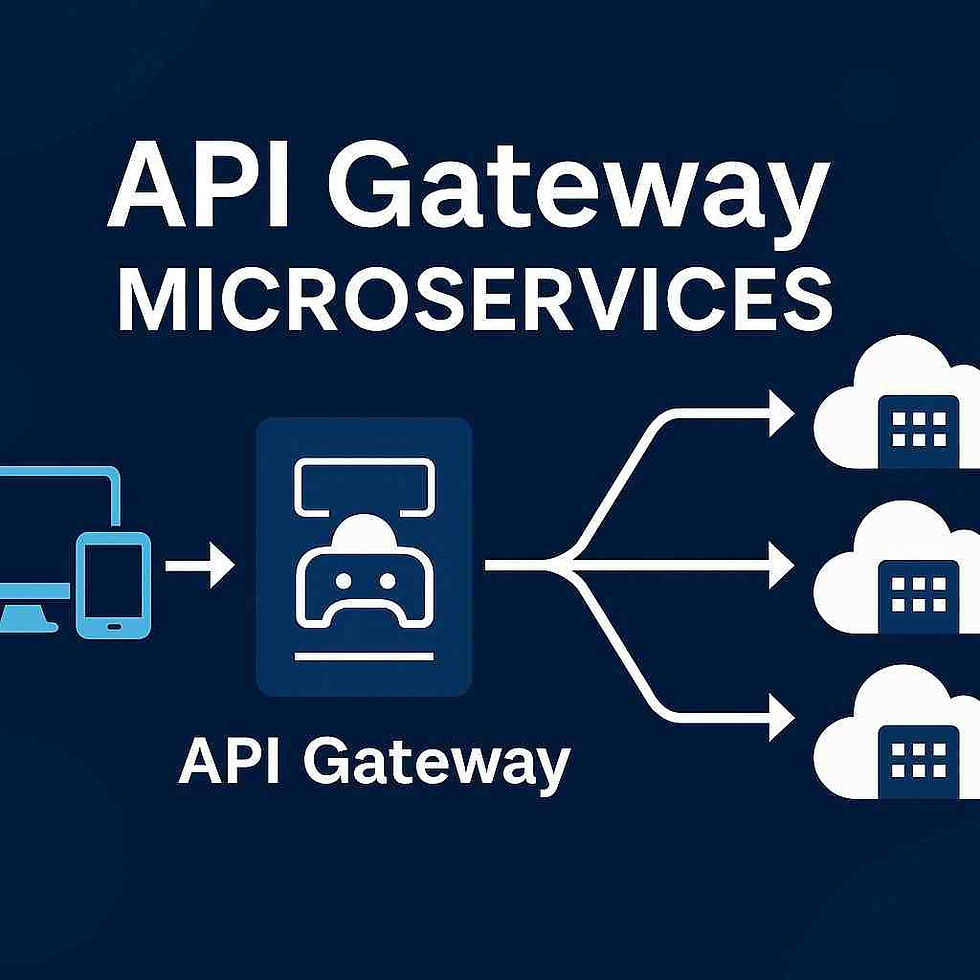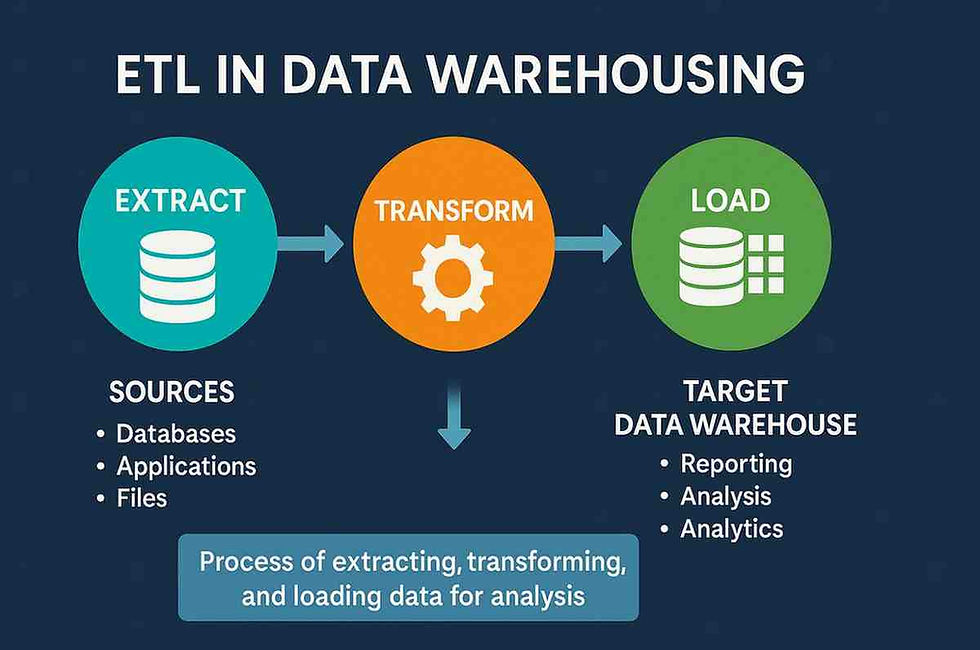Shift Left Benefits: 7 Key Advantages of Early Testing & Security in Software Development
- Gunashree RS
- May 28
- 7 min read
Updated: May 29
In today's fast-paced software development landscape, organizations are constantly seeking ways to deliver high-quality applications faster and more efficiently. One approach that's revolutionizing how teams think about testing and quality assurance is the "shift left" methodology. But what exactly are the shift left benefits, and why should your development team care?
The shift left approach fundamentally changes when and how testing occurs in your software development lifecycle. Instead of waiting until the end of development to test your application, you integrate testing activities much earlier in the process. This strategic shift has proven to deliver remarkable results for organizations worldwide.

Understanding the Shift Left Philosophy
The term "shift left" was coined by Larry Smith in 2001, representing a visual metaphor where the software development lifecycle is depicted as a timeline moving from left to right. Traditional approaches place testing activities toward the right side of this timeline, while shift left moves these activities to the left, earlier in the development process.
The idea is to improve quality by moving tasks to the left as early in the lifecycle as possible. This means developers, testers, and security professionals collaborate from the very beginning of a project, rather than working in isolated phases.
The Financial Impact: Dramatic Cost Reduction Benefits
One of the most compelling shift-left benefits involves the dramatic reduction in development costs.
The numbers speak for themselves:
According to the NIST, resolving defects in production can cost 30 times more and up to 60 times more in case of security defects. This stark difference highlights why catching issues early isn't just about quality—it's about protecting your bottom line.
When you implement shift left practices, you're essentially investing in prevention rather than cure. The cost to fix a bug during the coding phase is minimal compared to addressing the same issue after deployment.
Consider these typical cost multipliers:
Requirements phase: 1x cost
Design phase: 5x cost
Implementation phase: 10x cost
Testing phase: 20x cost
Production phase: 30-60x cost
Enhanced Software Quality Through Early Detection
One of the primary benefits of a shift-left testing approach is the early detection of defects. When testing activities begin alongside development, teams can identify and resolve issues before they become deeply embedded in the codebase.
This early detection provides several quality-related advantages:
Improved Code Integrity: Developers receive immediate feedback on their code quality, allowing them to make corrections while the context is still fresh in their minds.
Reduced Technical Debt: By addressing issues early, teams prevent the accumulation of technical debt that often plagues projects when testing is delayed.
Better Architectural Decisions: Early testing reveals design flaws and architectural issues that would be expensive to correct later in the development cycle.
Accelerated Time-to-Market and Development Speed
By testing early in the development process, teams can identify and address bugs when they are easier and less costly to fix. This efficiency translates directly into faster development cycles and quicker time-to-market.
The acceleration happens through several mechanisms:
Parallel Processing: Testing occurs simultaneously with development rather than sequentially
Reduced Rework: Fewer bugs mean less time spent on fixes and retesting
Streamlined Deployments: Applications with fewer defects deploy more smoothly
Continuous Integration: Early testing enables more frequent, reliable integrations
Security Benefits: Building Secure Applications from Day One
Shifting left in the context of DevSecOps means implementing testing and security into the earliest phases of the application development process. This proactive approach to security delivers significant benefits over traditional reactive security measures.
Security shift left benefits include:
Vulnerability Prevention: Security issues are identified and resolved during development rather than after deployment
Compliance Integration: Regulatory requirements are built into the development process from the beginning
Reduced Attack Surface: Security-first thinking creates applications with inherently better security postures
Cost-Effective Security: Fixing security issues early costs substantially less than post-deployment remediation
Improved Team Collaboration and Communication
The shift left approach breaks down traditional silos between development, testing, and operations teams. This improved collaboration creates several organizational benefits:
Cross-Functional Understanding: Developers gain a deeper appreciation for testing concerns, while testers better understand development constraints
Shared Responsibility: Quality becomes everyone's responsibility rather than just the testing team's burden
Knowledge Transfer: Early collaboration facilitates better knowledge sharing across team members
Reduced Handoff Friction: Fewer formal handoffs mean less potential for miscommunication and delays
Implementation Strategies for Maximum Benefits
To realize the full potential of shift left benefits, organizations need strategic implementation approaches:
Start with Culture Change: Success requires buy-in from all stakeholders and a willingness to change established processes
Invest in Automation: Automated testing tools enable the frequent, early testing that makes shift left possible
Train Your Team: Developers need testing skills, and testers need to understand development processes
Choose the Right Tools: Select testing frameworks and tools that integrate well with your development environment
Measure and Iterate: Track metrics to understand the impact of your shift left initiatives and continuously improve
Measuring the Success of Your Shift Left Initiative
Understanding whether your shift left implementation is delivering benefits requires careful measurement. Key metrics to track include:
Defect Detection Rate: Percentage of bugs found in early development phases versus later phases
Cost per Defect: Average cost to resolve issues found at different stages
Time to Resolution: How quickly teams can address identified issues
Customer Satisfaction: End-user feedback and satisfaction scores
Deployment Frequency: How often your team can successfully deploy code
Mean Time to Recovery: How quickly can you resolve production issues
Common Challenges and How to Overcome Them
While shift left benefits are substantial, implementation isn't without challenges:
Resource Allocation: Early testing requires upfront investment in tools and training. Address this by demonstrating ROI through pilot projects and gradual rollouts.
Cultural Resistance: Some team members may resist changing established workflows. Combat this through education, training, and celebrating early wins.
Tool Integration: Existing tools may not support early testing approaches. Evaluate and invest in modern development and testing platforms that enable shift-left practices.
Skill Gaps: Team members may lack necessary cross-functional skills. Implement comprehensive training programs and consider hiring specialists to fill critical gaps.
The Future of Shift Left: Emerging Trends and Technologies
The shift left methodology continues evolving with new technologies and approaches:
AI-Powered Testing: Machine learning algorithms can identify potential issues even earlier in the development process
Cloud-Native Development: Modern cloud platforms make it easier to implement continuous testing and deployment
Low-Code/No-Code Integration: These platforms are incorporating shift left principles to enable non-technical users to build quality applications
DevSecOps Evolution: Security is becoming even more integrated into early development phases
Conclusion
The shift left benefits extend far beyond simple cost savings, though the financial advantages alone justify adoption for most organizations. By embracing early testing and quality assurance practices, development teams can deliver higher-quality software faster while reducing costs and improving security.
The benefits of shift left include improved efficiency, reduced costs, enhanced software quality, and strengthened security. These advantages combine to create a compelling case for any organization serious about software development excellence.
Success with shift left requires commitment, investment, and patience as teams adapt to new ways of working. However, organizations that successfully implement shift left practices consistently report improved outcomes across all key metrics: quality, speed, cost, and team satisfaction.
Key Takeaways
Dramatic Cost Savings: Fix bugs 30-60x cheaper by catching them early rather than in production
Quality Improvement: Early detection prevents defects from becoming embedded in the codebase
Faster Deployments: Parallel testing and development accelerate time-to-market significantly
Enhanced Security: Built-in security from day one creates more secure applications
Better Collaboration: Cross-functional teams work more effectively together
Reduced Technical Debt: Early issue resolution prevents the accumulation of costly technical debt
Measurable ROI: Clear metrics demonstrate the business value of shift left initiatives
Competitive Advantage: Organizations implementing shift left deliver better software faster than competitors
Cultural Transformation: Shift left creates a quality-first mindset throughout the organization
Future-Proofing: Early adoption positions teams for emerging technologies and methodologies
Frequently Asked Questions (FAQs)
What is shift left testing, and why is it important?
Shift left testing is a software development approach that moves testing activities earlier in the development lifecycle. It's important because it enables teams to catch and fix bugs when they're less expensive to resolve, typically saving organizations 30-60 times the cost compared to fixing issues in production.
How does shift left improve software quality?
Shift left improves software quality by enabling early detection of defects, reducing technical debt, and ensuring quality considerations are built into the development process from the beginning rather than added as an afterthought.
What are the main challenges of implementing shift left?
The main challenges include cultural resistance to change, upfront investment in tools and training, potential skill gaps in cross-functional areas, and integration challenges with existing development tools and processes.
How long does it take to see the shift left benefits?
Most organizations begin seeing initial benefits within 2-3 months of implementation, with significant improvements typically evident within 6-12 months. The timeline depends on team size, project complexity, and commitment to the cultural changes required.
Is shift left suitable for all types of software projects?
Shift left principles can benefit most software projects, but the specific implementation may vary. Agile and continuous integration environments typically see the greatest benefits, while traditional waterfall projects may require modified approaches.
What tools are needed for shift-left implementation?
Essential tools include automated testing frameworks, continuous integration platforms, code quality analysis tools, and collaboration platforms. The specific tools depend on your technology stack and development processes.
How does shift left affect team roles and responsibilities?
Shift left blurs traditional role boundaries, requiring developers to take more responsibility for testing and quality, while testers become more involved in early development phases. This creates more collaborative, cross-functional teams.
Can shift left work with remote development teams?
Yes, shift left can work effectively with remote teams. Cloud-based development and testing tools, along with robust communication platforms, enable distributed teams to collaborate effectively on early testing activities.




Link INDOVIP138
indovip138
indovip138
indovip138
indovip138
indovip138
indovip138
indovip138
indovip138
indovip138
indovip138
indovip138
indovip138
indovip138
indovip138
indovip138
indovip138
indovip138
indovip138
indovip138
indovip138
indovip138
indovip138
indovip138
indovip138
indovip138
indovip138
indovip138
indovip138
indovip138
indovip138
indovip138
indovip138
https://mcdonaldpaper.com/coldline-wfp8x8-fl-8-20x8-20x7-5-feet-white-walk-in-freezer-box-with-floor/ offers you capacity, energy efficiency and modular design. Ideal for restaurants, catering and supermarkets. The panels are easy to clean, and the body is resistant to damage and moisture. This is premium equipment, available at a competitive price on the website of the official supplier of refrigeration chambers and freezers for business.
VidText AI </a> is a free AI-driven tool that transcribe video & audio to text quickly and accurately.Support 100+Languages, Generate Mind map, 15 Hour Uploads, over 99% Accuracy.Perfect for meetings, lectures, interviews, and content creators,helping you effortlessly transcribe video and audio to accurate and readable text and mindmap.
VidText AI
Picture AI All-in-one ai image generator,50+ Ai Image Generator Models,such as AI Photo Maker, AI Baby Generator, Photo Restoration, Image Upscaler, Image To Image AI, and Flux Al Image Generator.